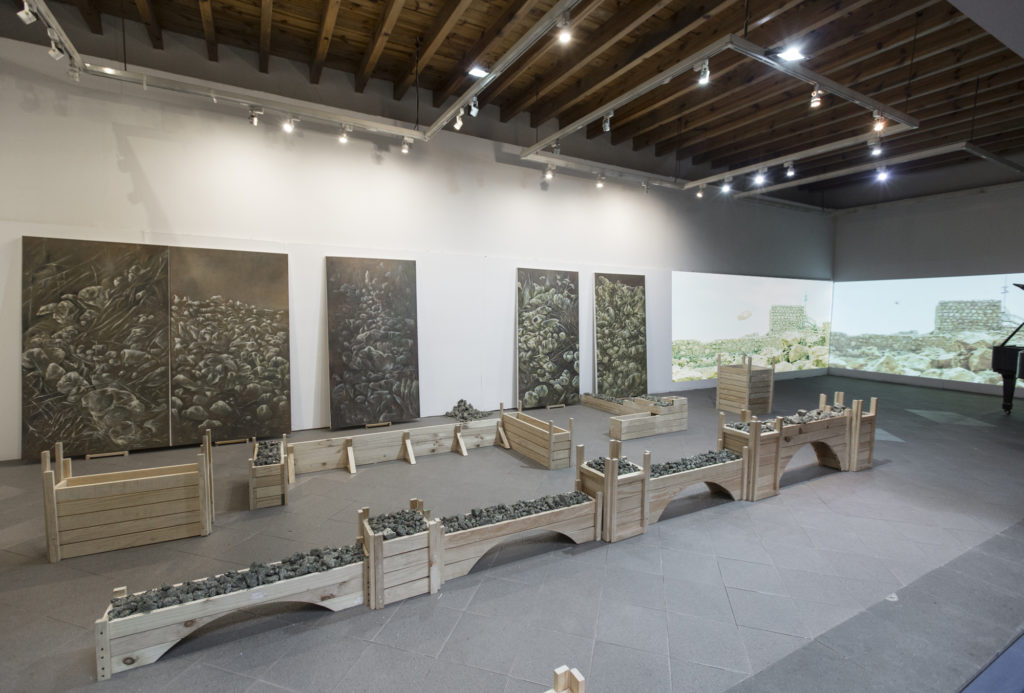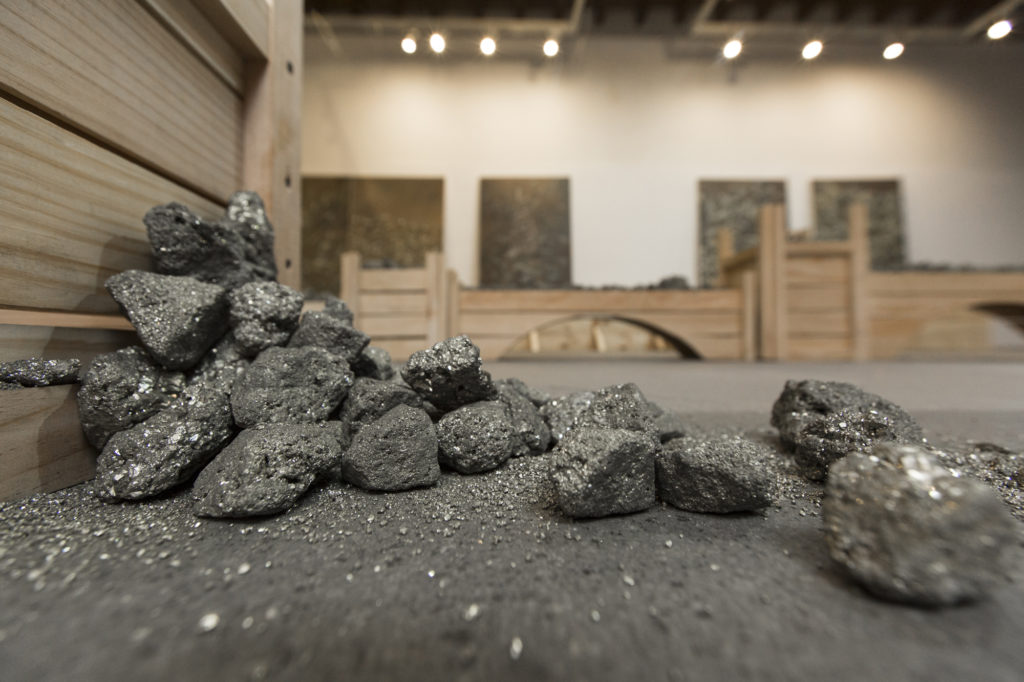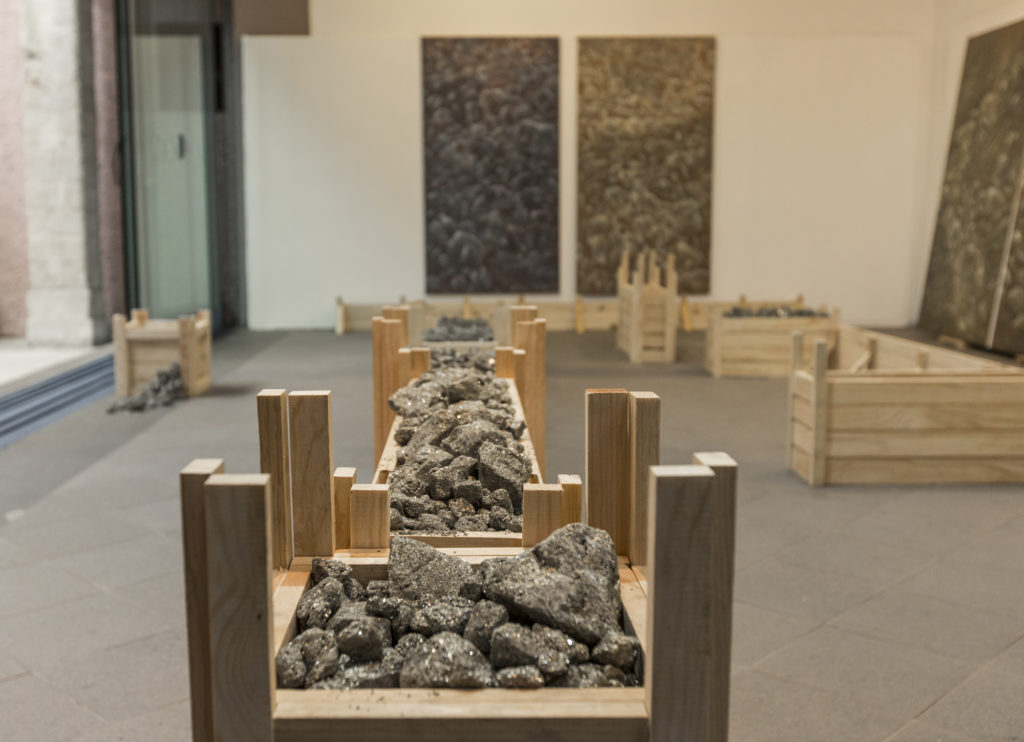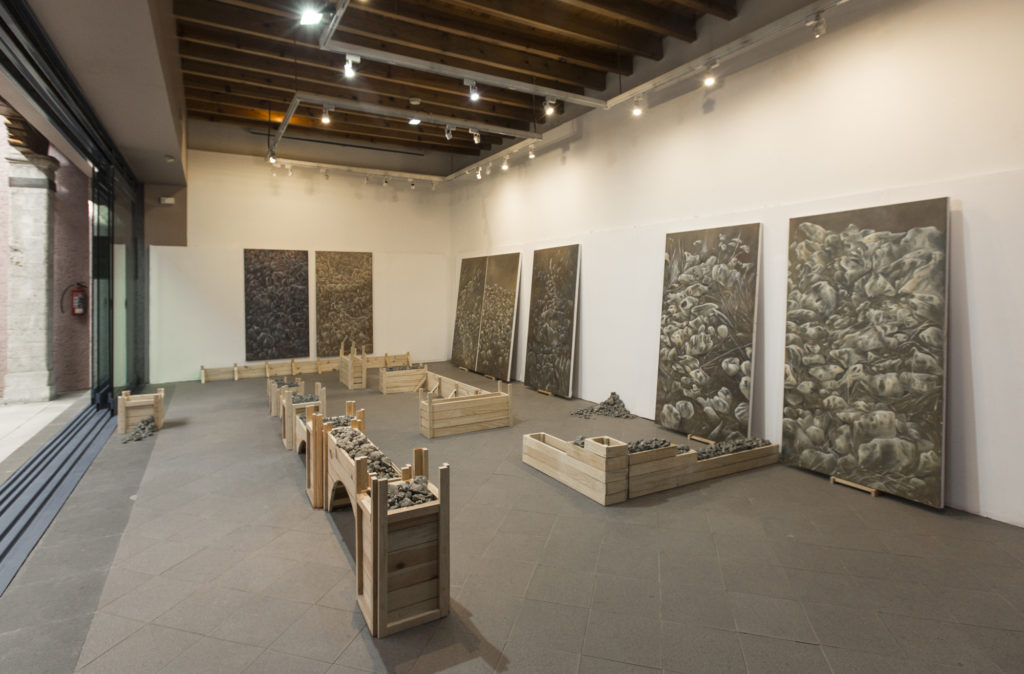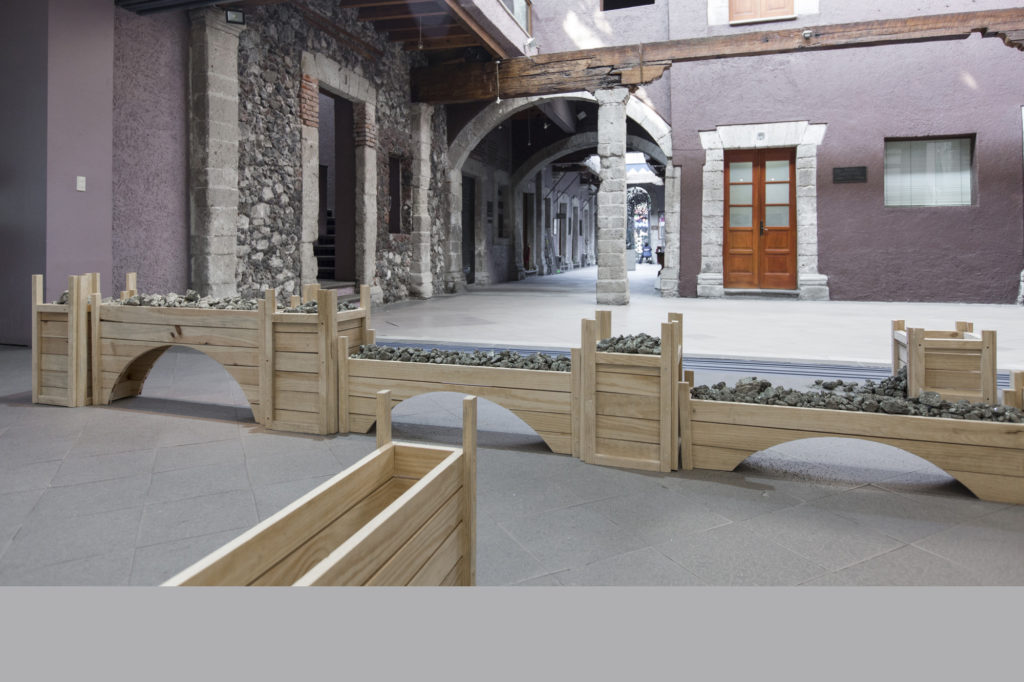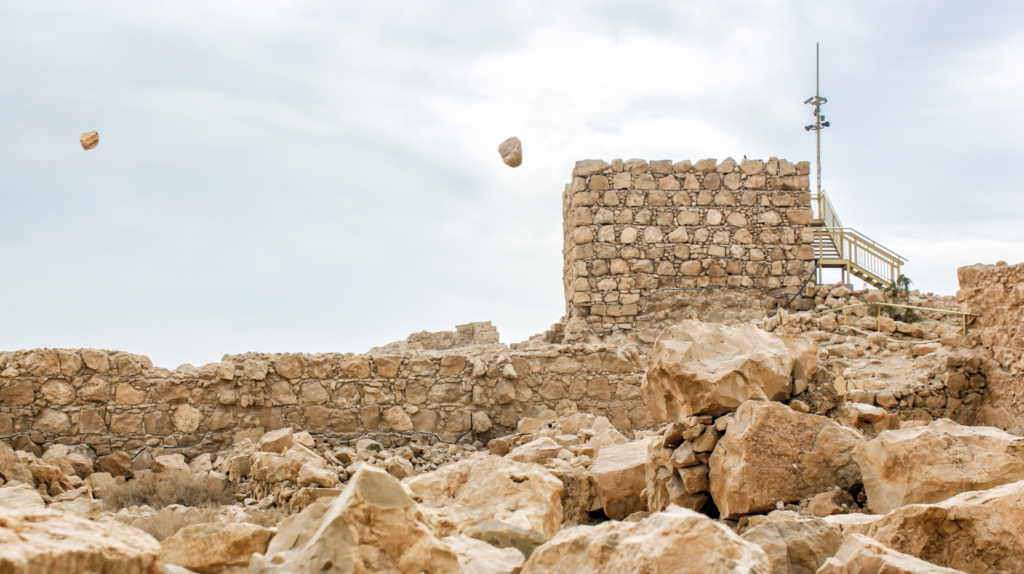Compositions for Stones of Gold, 2018, Mexico City, in collaboration with Keren Anavy.
Keren Anavy & Tal Frank, Compositions for Stones of Gold
The Gallery of The Institute Culture Mexico-Israel, Mexico City, February 15- March 14, 2018The exhibition is a new collaborative project between visual artists Keren Anavy & Tal Frank. A site-specific installation located in a historic building at The Institute Culture Mexico-Israel, in this show, the artists focus their attention on notions of place and site, by using stones both as a material and subject matter, questioning its durability and fragility. For this show the artists investigate archaeological sites and ruins both in Mexico and Israel in order to scrutinize the relation between place and identity.
Exhibition text by Shlomit Dror:
This exhibition will be Keren Anavy’s and Tal Frank’s second collaboration in Mexico, since their recentrelocation from Israel to Mexico City and New York. While working individually, they have also established a collaborative practice which they have been developing for the past six years, mainly in Israel. In this exhibition, they continue with their ongoing investigation on the relationship between nature and culture through the lens of specific sites and locations.
Using stone as their material and subject matter, they investigate notions of durability and fragility in different sites in both Israel and Mexico. This show will include various mediums the artists are engaged with, including sculpture, painting, drawing, sound and video art.
Exploring ways in which landscapes become extensions of sites and cultures, they concentrated primarily onarcheological ruins in Mexico and Israel. Their point of departure is the sixteenth century Mexican aqueduct, Padre Tembleque, a Roman-based water conduction built with Mesoamerican construction techniques, on which the sculpture in the middle of the gallery is based. By creating this sculptural maquette, they also reference the Roman aqueduct in Israel, and thus link these two sites to the long-term water scarcity currently existing in both countries.
This early infrastructure, which is the foundation of modern water transportation today, also speak to the way water passages, whether above or underground, creates borders and define territory, the catalyst of major political disputes and conflicts. Resembling an architectural model and at the same time referencing an archeological site, through this sculpture, the artists accentuate the contrast between two conditions: built and destroyed.
In addition, this exhibition contains seven large paintings by Anavy and a video work by Frank. Anavy depicted stones from an area located west to Jerusalem in central Israel Modi’in—adjacent to an ancient Biblical site believed to be the place of Jewish revolt against the Greeks. Working vertically and packing the picture planewith piles of rocks, Anavy directs the viewer’s gaze from bottom to top, as though standing in rubble. The lackof vegetation in the paintings, as well as their monochromatic color palette convey stillness and drought. InFrank’s video, we are presented yet with another historical site in the Judean desert, Masada, known for one ofthe most controversial uprising in Jewish history, where an extreme sect of religious Jews chose a mass suicide over surrendering to the Romans. Screened on the gallery’s wall, the video shows a tower-like structure being struck by stones, and a few moments later, stones are being tossed in response. This constant action of rockthrowing is evocative of an unarmed population protesting a governing power’s authority, noticeably evident inthe Arab-Israeli conflict.
The scattered Pyrite stones on the gallery’s floor evoke the appearance of an archeological site and furthersnotions of destruction and renewal, themes presented throughout this exhibition. Using this particular stone, alsoknown by its epithet “Fool’s Gold” due to its mineral’s superficial resemblance to gold, this disillusion represents “a yearning to another place, a new place, a utopia, and similar to the yearning for gold, is out of reach,” according to the artists. Like in the other works in the show, her too the stones are represented in theirraw form, suggesting a shattered surrounding on one hand, but also alluding to the likelihood that one could build something new from these fragments.
– Office of Cultural Affairs, Embassy of Mexico Israel
| The exhibition supported by: |
| – Asylum Arts, New York |
